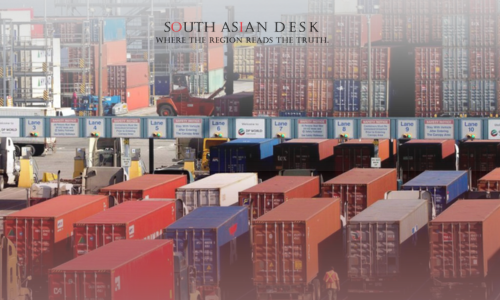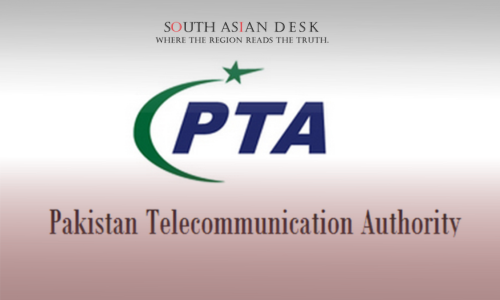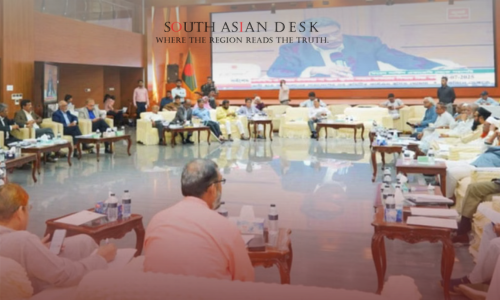US-Pakistan Trade Deal marks a significant step forward as the government secures a reduction in reciprocal tariffs with the United States from 29 per cent to 19 per cent, a move expected to benefit countless families dependent on Pakistan’s export sectors. This adjustment, the lowest in the region, arrives at a pivotal moment when many workers and business owners are seeking stability and growth after challenging economic times. For exporters in textiles, apparel, rice, salt, surgical instruments, sports goods, electronics, food, agriculture, and leather, this could mean renewed access to one of the world’s largest markets, fostering jobs and brighter futures for communities across the country.
Meeting About US-Pakistan Trade Deal
The breakthrough emerged from a high-level meeting held in Islamabad, chaired by Commerce Minister Jam Kamal Khan. Attendees included Special Assistant to the Prime Minister on Industries and Production Haroon Akhtar Khan, Coordinator to the Prime Minister on Commerce Rana Ihsaan Afzal, and Secretary Commerce Jawad Paul, alongside senior officials from the Commerce and Industries Divisions. Over 30 leading exporters and representatives from small and medium enterprises joined the discussions, sharing their aspirations and concerns. The atmosphere was one of cautious optimism, as participants reflected on how this tariff cut could alleviate pressures faced by families dependent on these industries, where every shipment represents not just goods, but livelihoods and dreams.
Effect of US-Pakistan Trade Deal
Minister Jam Kamal Khan described the revised tariff structure as a timely opportunity to enhance exports, expressing gratitude for the collaborative efforts of the government’s economic team and the private sector. He emphasised the administration’s dedication to export-led growth, pledging both short-term relief and long-term strategies to support the nation’s producers. Haroon Akhtar Khan highlighted Pakistan’s regional advantages, reaffirming the government’s resolve to assist stakeholders in navigating global shifts. The minister assured exporters that their suggestions would be gathered and presented to the Prime Minister for prompt consideration, underscoring a commitment to policies that prioritise the well-being of ordinary citizens.
The US-Pakistan trade deal is poised to provide Pakistani exporters with a competitive edge in the US market, potentially increasing shipments and revenues that trickle down to workers and their households. Industry voices at the meeting called for steady, supportive policies to manage manufacturing costs and ensure reliable access to essential inputs. They stressed the need for a stable environment that allows for forward planning, evoking the shared hope that such measures could lead to sustained socio-economic progress. In recent days, the Pakistan Stock Exchange has reflected this positivity, reaching record highs driven by investor enthusiasm in textiles, cement, and energy sectors, signalling confidence that could translate into more employment and community development.
Beyond tariffs, the agreement opens doors to broader cooperation, including potential investments in energy and infrastructure. Discussions have touched on enhancing oil reserves and market ties, which could further bolster Pakistan’s resources and create opportunities for skilled labour. For many in rural and urban areas alike, this evokes a sense of possibility, where hard work in fields or factories might yield greater rewards, helping families afford education, healthcare, and a better quality of life. The deal aligns with efforts to strengthen trade relations, positioning Pakistan to capitalise on its strengths in diverse sectors while addressing the everyday struggles of its people.
As exporters prepare to expand their presence, the focus remains on turning this advantage into lasting benefits. Government officials have reiterated their intent to compile recommendations and act swiftly, ensuring that the gains reach those who need them most. This milestone not only boosts economic prospects but also rekindles faith in collaborative progress, reminding readers of the resilience and potential within South Asia’s dynamic markets. With the US-Pakistan trade deal now in place, exporters stand ready to forge ahead, carrying the hopes of a nation eager for prosperity.
Published in SouthAsianDesk, August 13th, 2025
Follow SouthAsianDesk on X, Instagram, and Facebook for insights on business and current affairs from across South Asia.






